Photos: WireImage.com/Getty Images
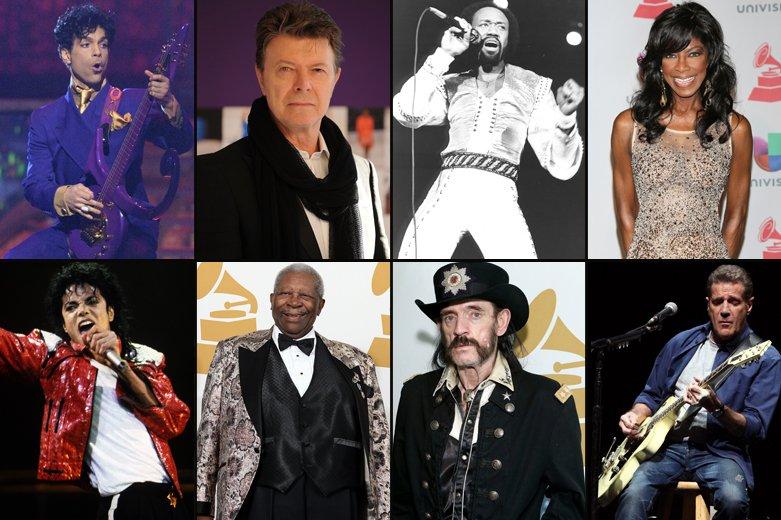
news
Rock And Roll Over: Music, Legacy And Mortality
For Prince, David Bowie and Lemmy Kilmister's boomer and Gen X fans, an artist's legacy and musical footprint live on long after death
The last 15 months have been an unfortunate harbinger of what to expect in music in the next decade or so, starting with the death of King of the Blues B.B. King, then heavy metal god Lemmy Kilmister, R&B diva Natalie Cole, country/rock pioneer Glenn Frey, soul legend Maurice White, country icon Merle Haggard, and a 57-year-old Prince, among others. As Pete Townshend, who once declared, "Hope I die before I get old," might put it, "Who's next?"
Perhaps the first shocking "rock star" fatality was that of country pioneer Hank Williams, who suffered a heart attack in the back seat of his Cadillac at age 29 in the early hours of Jan. 1, 1953, while being driven to his next gig. The news sent sales of Williams' final single, the ironically titled "I'll Never Get Out Of This World Alive," to No. 1 on Billboard's Country Singles chart less than a week later.
Some 63 years later, on Jan. 10, 2016, David Bowie died after a lengthy bout with cancer that had been kept from all but his closest family members and friends, just two days after the release of his new album, Blackstar. On Jan. 7, a mere 24 hours before the album's release, Bowie debuted the appearance of the eerie, fatalistic music video for "Lazarus," which made clear the chameleon performer was readying to shuffle off not just his latest guise, but the mortal coil itself. Like Williams, Bowie's death spurred his own first-ever chart-topping album, and unleashed a torrent of tributes and memorials to the fallen glam icon.
Similarly, Lou Reed (on his 1992 meditation on death, Magic And Loss), Warren Zevon (with his final album, The Wind, which contained a version of Bob Dylan's "Knockin' On Heaven's Door") and Johnny Cash (who covered standards such as "Ain't No Grave" and "Can't Help But Wonder Where I'm Bound" on his posthumous Rick Rubin-produced American VI: Ain't No Grave) all released albums in their later years that pondered imminent mortality. Listening to these songs, knowing their creators are no longer with us, gives the odd sensation of hearing them speak from beyond the grave — a final parting gift, keeping their spirits, if not their corporeal beings, alive for subsequent generations.
With the specter of this fall's Desert Trip — dubbed "Oldchella" by cynics — the true last waltz for boomers has resulted in reported $14 million paydays for Dylan, Paul McCartney, the Rolling Stones, Neil Young, the Who, and Roger Waters, with a pair of sold-out three-day October weekends in Indio, Calif., offering a pilgrimage to Mecca and perhaps a final farewell to rock's halcyon heyday.
There are many factors at work that impact this seeming parade of passing icons — from the inevitable aging of the audience that grew up on rock and roll and its media-spawned personalities to today's proliferation of internet coverage spreading the word — but the sobering bottom line is the next decade or so will exhibit more of the same, both expected and surprising.
Meanwhile, for the massive recording and live concert industries, which have been built on the back of these all-too-mortal stars and the legacies (not to mention the music) they leave behind, is there life after death?
Jeff Jampol's JAM Inc. has forged a successful business from handling the estates of deceased artists, including pioneers such as Muddy Waters and Otis Redding, '60s stalwarts the Doors and Janis Joplin, reggae star Peter Tosh and funkmeister Rick James, all the way to grunge-punk icons Kurt Cobain and the Ramones. In Jampol's world, brands will always outlive bands, just as John Branca and John McClain have managed to turn the Michael Jackson estate into a lucrative property by maximizing assets, including selling its share of Sony/ATV Music Publishing for $750 million earlier this year, with estimates of its post-death earnings at $2 billion.
For Jampol, preserving these legacies for future generations is his primary goal. "Who knew rock and roll would even last long enough to create estates?" he asks. "The younger audience is who we're after, and not just their ears, but their eyes, hearts, minds, and souls. That's why I want to expose my clients' art and brand to them in a way that's authentic and credible."
Similarly, reacting to the void in the concert business created by the potential death of some of its most lucrative attractions, industry veteran Abbey Konowitch, who has worked his marketing magic at Arista Records, MTV, Maverick Records, and Disney, has developed, with GRAMMY-winning producer Rob Cavallo, among others, a concept dubbed RockmaniaLive! The live event offers state-of-the-art theatrical recreations of classic rock albums by a band with a symphony orchestra, resulting in a combination of Cirque du Soleil, the Boston Pops and the Fab Faux.
"Albums like Houses Of The Holy, The Dark Side Of The Moon and Goodbye Yellow Brick Road have become global cultural brands, have built the largest touring business in history, have generated billions of dollars in merchandise, ticket and album sales," says Konowitch. "[RockmaniaLive!] is an opportunity for classic rock fans to continue to experience the 'soundtrack of their lives' and share it with their whole family in a unique, multimedia way."
But not all legacy artists are whistling past their graves, nor are they mourning the past. In his March 2014 article "Stay Forever Young: Deconstructing The Rock Star Myth," Psychology Today's Dr. Michael Friedman wrote: "Far from life being over at 30, aging rockers are having an absolute blast into their 40s, 50s, 60s, and even 70s, finding ongoing success in their music."
Some artists, such as 74-year-old Paul Simon, are arguably producing their best work at this advanced age. The GRAMMY winner's new album, Stranger To Stranger, has more than its fair share of meditations on mortality: "The fact is most obits are mixed reviews," he sings in "The Werewolf," a song about a mythical angel of death. ("Life is a lottery/A lot of people lose.")
The fact is old age can also bring hard-earned wisdom — not to mention Simon's way of incorporating elements of Brazilian, Afro-pop, folk, reggae, and experimental percussive and rhythmic elements from his entire career to bear in his latest.
"I do think about retirement," he confessed to Rolling Stone. "But I just don't know. Philip Glass is one of my role models and he just keeps going. He said to me, 'If you don't do it, who will write a Paul Simon song?'"
If the death of legacy music icons is cause to ponder our own short time on earth, the acknowledgement that rock and roll will never die is also, somehow, a comfort.
"These guys were my heroes," concludes Jampol, who recalled his own spiritual awakening seeing Bowie perform at the Santa Monica Civic Auditorium in 1972 as a "short, nonathletic Jewish weirdo."
"When he sang, 'You're not alone,' in 'Rock 'N' Roll Suicide,' I immediately felt part of this community of outsiders. I cried for three days when he died," says Jampol.
"My goal was to create something that helps preserve and make contemporary this art, these messages, that connection. Individuals may come and go, but the legacy, the passion, lives on."
(Roy Trakin is currently a senior news editor at All Access, a past contributor to a number of legendary rock magazines [remember those?] and a die-hard Cantonese Chinese food fanatic [love crispy noodles, duck sauce and hot mustard].)
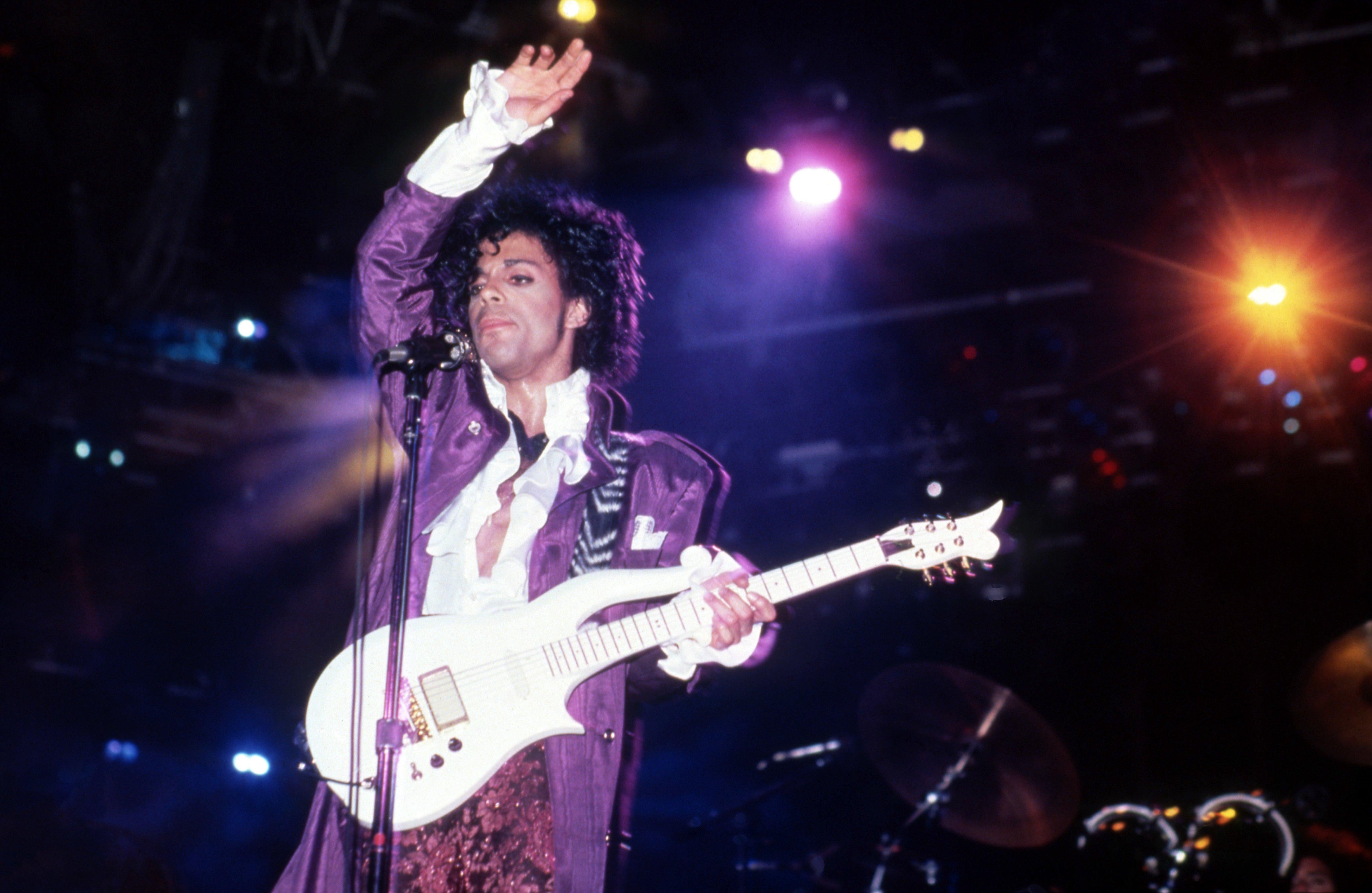
Photo: Ross Marino/Getty Images
list
7 Reasons Why Prince's 'Purple Rain' Is One Of Music’s Most Influential Albums
In honor of the 40th anniversary of 'Purple Rain,' dig into the ways Prince's magnum opus didn't just solidify him as an icon — it changed the music industry and culture at large.
"I strive for originality in my music," Prince declared in a 1985 interview with MTV. "That was, and will always be the case."
It was this determination to do things his own inimitable way that birthed the decade's most audacious superstar project: Purple Rain.
Prior to the album's June 25, 1984 release, Prince had scored some mainstream hits — including "1999" and "Little Red Corvette" — but hadn't fully blossomed into the prolific, world-conquering musical hero he's now immortalized as. Nor did he have acting experience. Yet, Prince somehow managed to convince his management and label into financing a big-screen hybrid of romance, drama and musical accompanied by an equally ambitious pop soundtrack.
It was an inherently risky career strategy that could have derailed the Purple One's remarkable rise to greatness in one fell swoop. Instead, Purple Rain enjoyed blockbuster success at both the box office and on the charts, with the film grossing more than $68 million worldwide and the album topping the Billboard 200 for a remarkable 24 weeks.
Initially conceived as a double album featuring protege girl group Apollonia 6 and funk rock associates the Time, the Purple Rain OST worked as an entirely separate entity, too. In fact, it had already sold 2.5 million copies in the States before the movie hit theaters, largely thanks to the immediacy of lead single "When Doves Cry," Prince's first ever Billboard Hot 100 No. 1.
And a full 40 years on from its release, Purple Rain's diverse range of power ballads, hard rockers and party anthems still possess the power to stun, whether the phrase "You have to purify yourself in the waters of Lake Minnetonka" is familiar or not. Here's a look at why the GRAMMY-winning record — and 2010 GRAMMY Hall of Fame inductee — is regarded as such a trailblazer.
It Hopped Genres Like No Album Before
While the streaming age has encouraged artists and listeners to embrace multiple genres, back in the 1980s, "stay in your lane" was the common mindset. Of course, a musician as versatile and innovative as Prince was never going to adhere to such a restriction.
The Purple One had already melded pop, soul, R&B, and dance to perfection on predecessor 1999. But on his magnum opus, the star took his sonic adventurism even further, flirting with neo-psychedelia, heavy metal and gospel on nine tracks which completely eschewed any form of predictability. Even its most mainstream number refused to play by the rules: despite its inherent funkiness, "When Doves Cry" is a rare chart-topper without any bass!
As you'd expect from such a virtuoso, Prince mastered every musical diversion taken. And the album's 25 million sales worldwide proved that audiences were more than happy to go along for the ride.
It Championed Female Talent On And Behind The Stage
Although the likes of Jill Jones, Wendy Melvoin and Lisa Coleman had contributed to previous Prince albums, Purple Rain was the first time the Purple One pushed his female musical proteges to the forefront. On "Take Me With U," he shares lead vocals with one of his most famous, Apollonia. On its accompanying tour, he invited Sheila E. to be his opening act. And in something of a rarity even still today, two of the soundtrack's engineers, Susan Rogers and Peggy McCreary, were women.
Melvoin and Coleman would go on to become artists in their own right as Wendy and Lisa, of course. And Prince would also help to radically transform Sheena Easton from a demure balladeer into a pop vixen; compose hits by the Bangles ("Manic Monday"), Martika ("Love Thy Will Be Done"), and Sinead O'Connor ("Nothing Compares 2 U"); and provide career launchpads for Bria Valente and 3RDEYEGIRL.
It Broke Numerous Records
As well as pushing all kinds of boundaries, Purple Rain also broke all kinds of records, including one at the music industry's most prestigious night of the year. At the 1985 GRAMMY Awards, Prince became the first Black artist ever to win Best Rock Performance By A Duo Or Group With Vocal, beating the likes of the Cars, Genesis, Van Halen, and Yes in the process. Purple Rain also picked up Best Score Soundtrack for Visual Media at the same ceremony, and was nominated in the night's most coveted Category, Album Of The Year.
Another impressive feat was the one that had only previously been achieved by the Beatles and Elvis Presley. With the same-named movie also hitting the top of the box office chart, Prince became only the third artist in history to score a No. 1 album, film and song in the same calendar year.
It Changed How Albums Were Sold
Although it seems positively chaste compared to the likes of "WAP," "Anaconda," and "My Neck, My Back (Lick It)," Purple Rain's tale of a "sex fiend" who enjoys pleasuring herself in hotel lobbies was deemed so provocative at the time of release that it inadvertently instigated a political taskforce.
Appalled by the sexual lyrical content of "Darling Nikki," a track she caught her 11-year-old daughter Karenna listening to, future Second Lady Tipper Gore decided to set up the Parents Music Resource Centre with three other "Washington Wives." The organization subsequently persuaded the record industry and retailers to issue any album containing child-unfriendly material with Parental Advisory stickers. (Another Prince-penned hit, Sheena Easton's "Sugar Walls," was also included alongside "Darling Nikki" in the "Filthy 15" list of songs the PMRC deemed to be the most offensive examples.)
It Paved The Way For The Pop Star Film
Prince was the first pop superstar from the 1980s holy trinity to bridge the gap between Hollywood and MTV, with Purple Rain arriving eight months before Madonna's star turn in Desperately Seeking Susan and four years before Michael Jackson's fantastical anthology Moonwalker. And it spawned a whole host of similar vanity projects, too.
You can trace the roots of everything from Mariah Carey's Glitter to Eminem's 8 Mile back to the tale of a troubled musical prodigy — nicknamed The Kid — who finds solace from his abusive home life at Minneapolis' hottest night spot. And while the acting and screenplay were never going to trouble the Academy Awards (as lead actress Apollonia predicted, however, it did pick up Best Score), Purple Rain's spellbinding onstage performances captures the euphoria of live music better than any other concert film, fictional or real.
It Helped Redefine Masculinity in Pop
"I'm not a woman, I'm not a man/ I am something that you'll never understand," Prince sings on Purple Rain's biggest dance floor number "I Would Die 4 U" — one of many occasions in both the album and film that challenged notions of masculinity, gender and sexuality even stronger than the Purple One had before.
Indeed, although the early '80s was unarguably a boom period for white British pop stars outside the heteronormative norm, it was rarer to find artists of color so willing to embrace such fluidity. Prince, however, had no problem — whether sporting his now-iconic dandy-ish, ruffled white shirt and flamboyant purple jacket combo, or unleashing his impressive array of diva-like shrieks and screams on "Computer Blue" and "The Beautiful Ones." André 3000, Lil Nas X and Frank Ocean are just a few of the contemporary names who have since felt comfortable enough to express themselves in similarly transgressive fashion.
It Added To The Great American Songbook
From the apocalyptic rockabilly of "Let's Go Crazy" ("We're all excited/ But we don't know why/ Maybe it's 'cause/ We're all gonna die") and messianic new wave of "I Would Die 4 U," to the experimental rock of "Computer Blue" and self-fulfilling prophecy of "Baby, I'm A Star," Purple Rain delights at every musical turn. But it's the title track that continues to resonate the most.
Following Prince's untimely death in 2016, it was "Purple Rain" — not "1999," not "Kiss," not "The Most Beautiful Girl in the World" — that many fans gravitated toward first. Initially conceived as a country duet with Stevie Nicks, the epic power ballad was described by Prince as pertaining "to the end of the world and being with the one you love and letting your faith/ God guide you through the purple rain."
The superstar acts every inch the preacher on the emotional tour-de-force. And as the final song that Prince ever performed live — on the Atlanta leg of his Piano & A Microphone tour, a week before his untimely passing — closed the curtains on a truly revolutionary career.
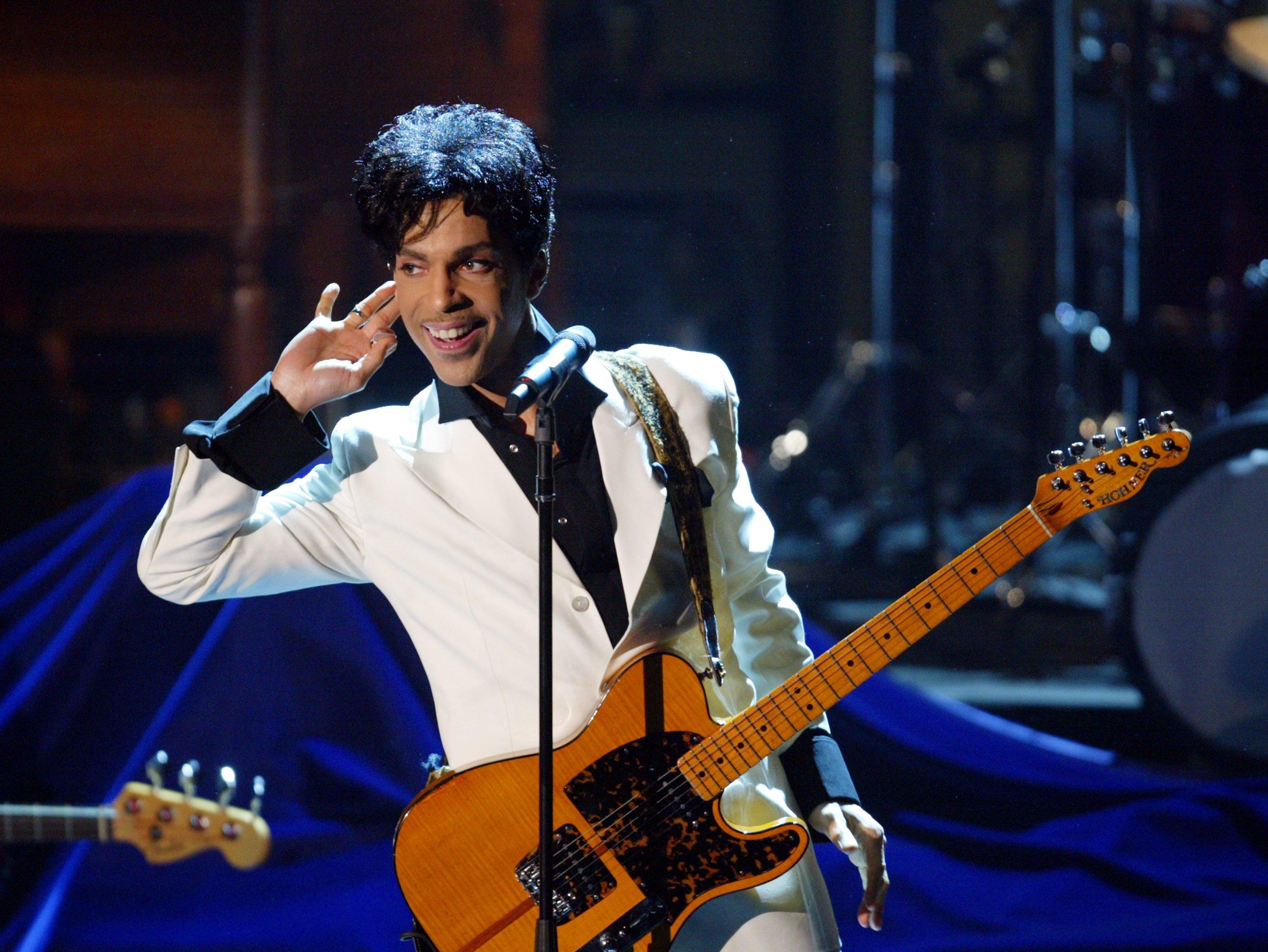
Photo: Kevin Kane/WireImage via Getty Images
list
7 Legendary Prince Performances You Can Watch Online In Honor Of 'Purple Rain'
Fans of the Purple One, unite: it's time to celebrate 40 years of 'Purple Rain.' Crank up these classic Prince performances in tribute to that epochal album, and beyond.
Have we really been living in a Princeless world for eight years? It doesn't feel like it. With every passing year, Planet Earth feels more of the magnitude of the Purple One's unbelievable accomplishments. Which includes the sheer body of work he left behind: his rumored mountain of unreleased material aside, have you heard all 39 of the albums he did release?
Yes, Prince Rogers Nelson was an impressive triple threat, and we'll likely never see his like again. In pop and rock history, some were wizards in the studio, but lacked charisma onstage, or vice versa: Prince was equally as mindblowing in both frameworks.
His iconic, GRAMMY Hall of Fame-inducted 1984 album Purple Rain — a soundtrack to the equally classic film — turns 40 on June 25. Of course, crank up that album's highlights — like "Let's Go Crazy," "When Doves Cry," and the immortal title track — and spin out from there to his other classics, like Dirty Mind, 1999, and Sign o' the Times.
To get a full dose of Prince, though, you've got to raid YouTube for performance footage of the seven-time GRAMMY winner through the years. Here are seven clips you've got to see.
Capital Centre, Landover, Maryland (1984)
Feast your eyes on Prince, the year Purple Rain came out. With guitarist Wendy Melvoin, keyboardist Dr. Fink, drummer Bobby Z., flanking him, even suboptimal YouTube resolution can't smother the magic and beauty. Check out this killing performance of Purple Rain's "I Would Die 4 U," where Prince's moves burn up the stage, with Sheila E. as much a percussion juggernaut as ever.
Read More: Living Legends: Sheila E. On Prince, Playing Salsa And Marching To The Beat Of Her Own Drum
Carrier Dome, Syracuse, New York (1985)
"Little Red Corvette," from 1982's 1999, has always been one of Prince's most magical pop songs — maybe the most magical? This performance in central New York state borders on definitive; bathed in violet and maroon, caped and cutting a rug, a 26-year-old Prince comes across as a force of divine talent.
Paisley Park, Minnesota (1999)
"I always laugh when people say he is doing a cover of this song… It's his song!" goes one YouTube commenter. That's absolutely right. Although "Nothing Compares 2 U" become an iconic hit through Sinead O'Connor's lens, it's bracing to hear the song's author nail its emotional thrust — as far fewer people have heard the original studio recording, on 1985's The Family — the sole album by the Prince-conceived and -led band of the same name.
Watch: Black Sounds Beautiful: Five Years After His Death, Prince’s Genius Remains Uncontainable
The Aladdin, Las Vegas (2002)
Let it be known that while Prince could shred with the best of them, he could equally hold down the pocket. This Vegas performance of "1+1+1=3," from 2001's The Rainbow Children, is a supremely funky workout — which also shows Prince's command as a bandleader, on top of the seeming dozens of other major musical roles he'd mastered by then.
Read More: Bobby Z. On Prince And The Revolution: Live & Why The Purple One Was Deeply Human
Rock And Roll Hall Of Fame Induction (2004)
Words can't describe Prince's universe-destroying solo over the Beatles' "While My Guitar Gently Weeps," in front of an all-star band of classic rockers including Jeff Lynne, Tom Petty, and George Harrison's son, Dhani. At song's end, Prince's guitar wails for a few more rounds, he tosses his Telecaster into the pit, and he struts offstage. We'll never see his like again.
Super Bowl Halftime Show (2007)
If you're the type of Super Bowl devotee who skips the Halftime Show, please — make time for Prince. When he digs into the trusty "Let's Go Crazy," it's hard not to follow suit. With fireworks blazing, and the Love Symbol brightly illumined, Prince arguably outshined the football game — as he tumbled through inspired cover after cover, by CCR, Dylan, and more. Naturally, he crescendoed with "Purple Rain," augmented by the drummers of the Marching 100.
Read More: Behind Diamonds and Pearls Super Deluxe Edition: A Fresh Look At Prince & The New Power Generation’s Creative Process
Coachella (2008)
At Coachella 2008, Prince offered a bounty of karaoke-style yet intriguing covers — of the B-52's ("Rock Lobster"), Sarah McLachlan ("Angel"), Santana ("Batuka"), and more. Chief among them was his eight-minute take on Radiohead's (in)famous first hit, "Creep," with a few quixotic twists, including flipping the personal pronoun I to a very Prince-like U.
"U wish U were special, / So do I," he yelps in the pre-chorus. Oh, Prince: to quote the radio-edited, de-vulgarized chorus of "Creep," you were so very special.
8 Ways Musicology Returned Prince To His Glory Days

Photo: Michael Ochs Archives/Getty Images
feature
On This Day In Music: 2 Live Crew's 'As Nasty As They Wanna Be' Becomes First Album Declared Legally Obscene, Anticipates First Amendment Cases
Known for their raunchy take on hip-hop, 2 Live Crew made history when 'As Nasty As They Wanna Be' was declared legally obscene. Thirty-four years later, here's how they fought back and turned their battle into a landmark First Amendment case.
When 2 Live Crew released their third studio album, they never imagined it would lead to a mammoth of legal entanglements. In 1989, the Miami-based hip-hop group dropped As Nasty As They Wanna Be, a title that held true throughout the ensuing legal battle.
In an effort to put their music on the map and distinguish themselves in the rap game, amidst one of hip-hops finest eras, the album featured sexually explicit themes and graphic content, leading to extreme popularity within pop culture. However, this widespread attention wasn’t all in a good light.
In Broward County, Florida, Sheriff Nick Navarro took a stand against the group, endeavoring to prevent local record store owners from selling the provocative album. In defiance of this censorship, 2 Live Crew filed a lawsuit in federal court, seeking legal recourse to halt the sheriff’s crackdown, prevent restrictions on album sales and legally defend their work as non-obscene.
Through the court's ruling, they deemed the work legally obscene and prohibited retailers from selling the album in Florida’s Broward, Dade, and Palm Beach counties.
Following the ruling, Florida record store owner Charles Freeman was arrested for selling As Nasty As They Wanna Be and three 2 Live Crew members were also arrested for performing their explicit music live at a nightclub in Hollywood, Florida.
Challenging the initial ruling with tenacity, the group’s record label, Luke Records, founded by 2 Live Crew member Luther Campbell, brought the case in front of the Eleventh Circuit Court of Appeals.
In this legal battle, the Eleventh Circuit Court applied the Miller Test, a benchmark for obscenity set by the United States Supreme Court’s test in the 1973 Miller v. California case. To meet the standards of the test, the work being challenged must appeal to a prurient, or shameful interest in sex, depict sexual materials in a patently offensive way, and lack serious literary, artistic, political, or scientific value. Luke Records called four experts in their fields to the stand, while Navarro failed to provide concrete evidence that the album met the standards outlined by the Miller Test.
In the Court of Appeals, it was found that the album did not meet the standards of obscenity that were set forth in the Miller Test. Since As Nasty As They Wanna Be was a creative work of music, the court ruled that the album had artistic value and thus did not meet all the standards to be deemed as obscene.
"I’ve been listening to the album by 2 Live Crew. It’s not the best album that’s ever been made, but when I heard they banned it, I went out and bought it," said David Bowie during his 1990 tour in Philadelphia, stopping in the middle of his performance to defend the group. "Freedom of thought, freedom of speech — it’s one of the most important things we have."
Last week, 2 Live Crew member Brother Marquis passed away, prompting Campbell to take to Twitter and honor his friend and fellow member, stating, "We took on so many fights for the culture, made great music together, something I will never forget."
To this day, the case against 2 Live Crew serves as a legal standard for First Amendment Rights, upholding the boundaries between censorship and freedom of speech within music.
"They really set a legal precedent for hip-hop artists today to be able to create in the way that they choose to," says Kiana Fitzgerald in her book "Ode to Hip-Hop." In the book, she also cites contemporary examples of hip-hop artists who openly speak about sex in their discography, like Megan Thee Stallion, Cardi B, Lil Wayne, and others.
Through 2 Live Crew’s legal fight, they paved the way as trailblazers for hip-hop artists to be As Nasty As They Wanna Be — without facing speech-smothering legal repercussions.
Explore More History-Making Moments In Music
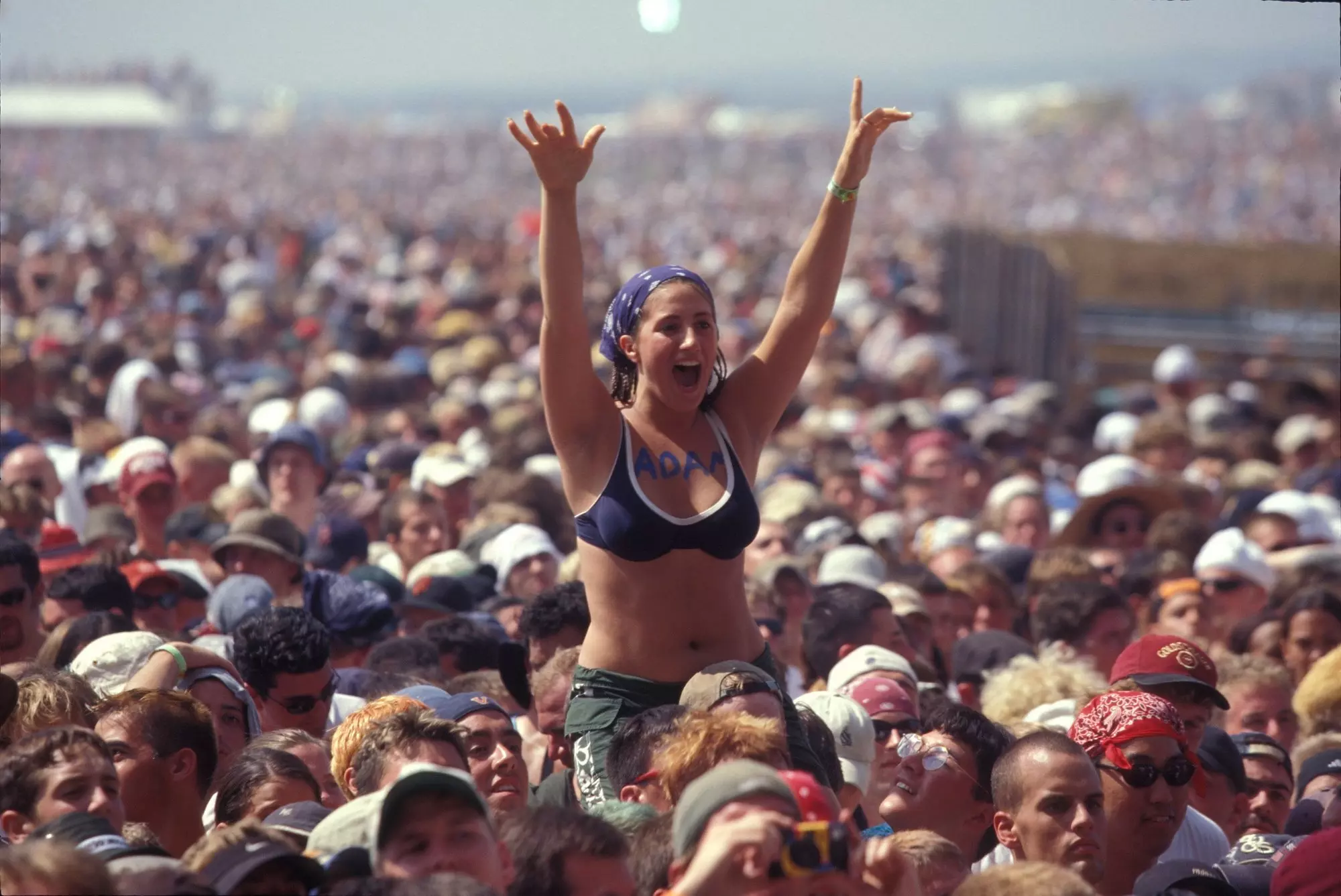
On This Day In Music: Woodstock '94 Begins In Upstate New York

On This Day In Music: Spice Girls Release "Wannabe," Their Iconic Debut Single

On This Day In Music: Michael Jackson Passes Away In Los Angeles At Age 50
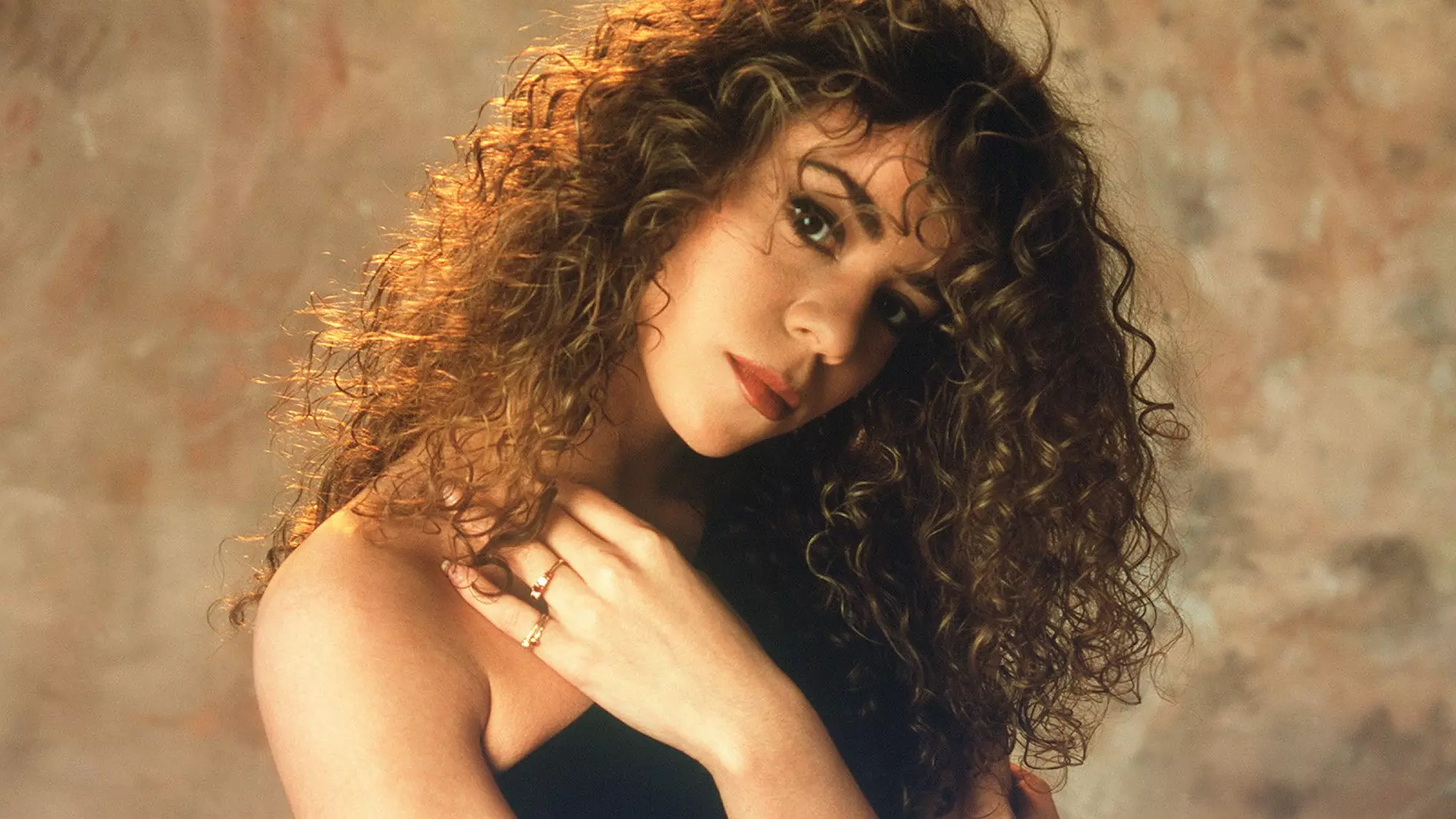
On This Day In Music: Mariah Carey Releases Her Self-Titled Debut Album
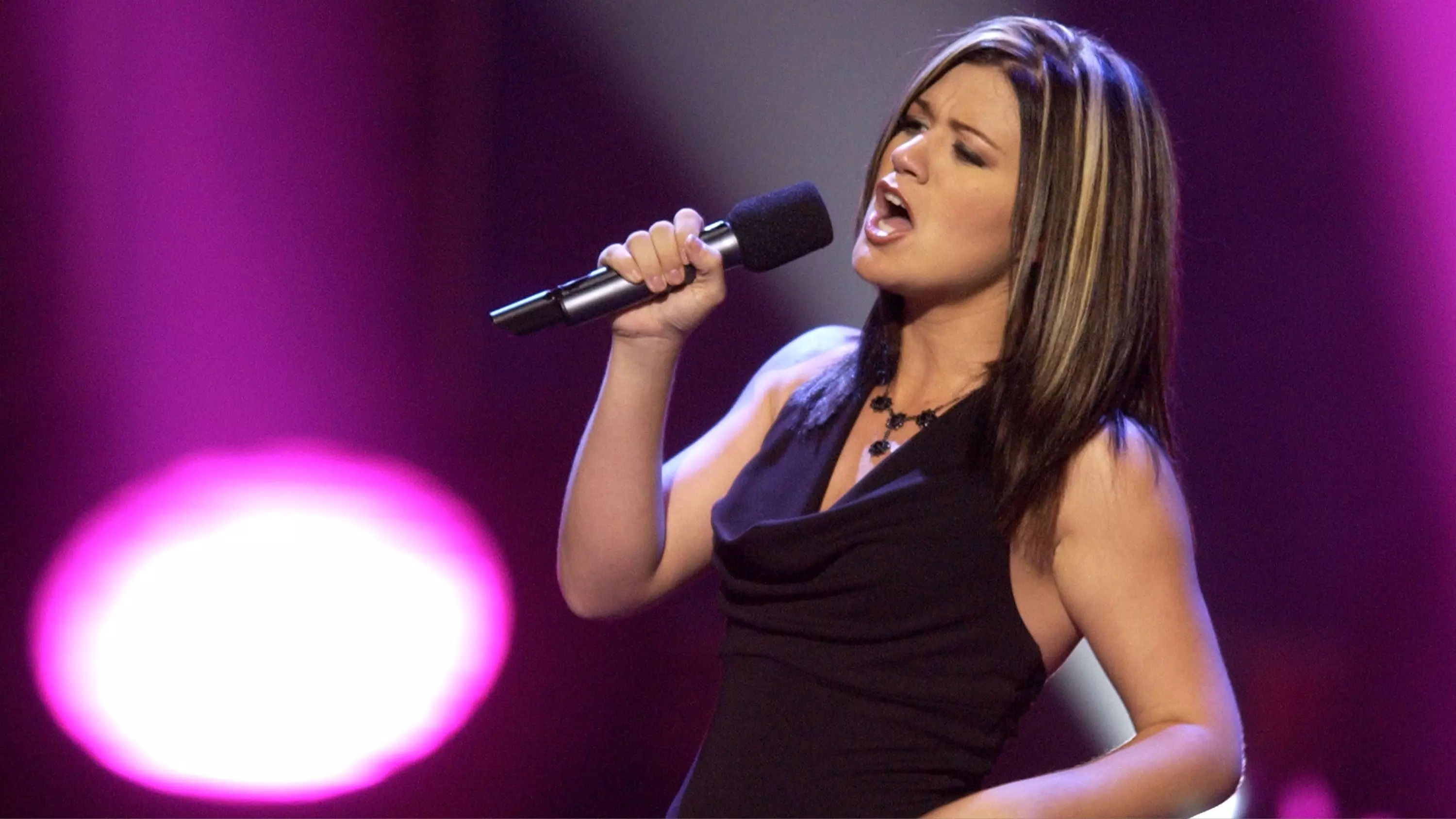
On This Day In Music: "American Idol" Premieres On Fox Network
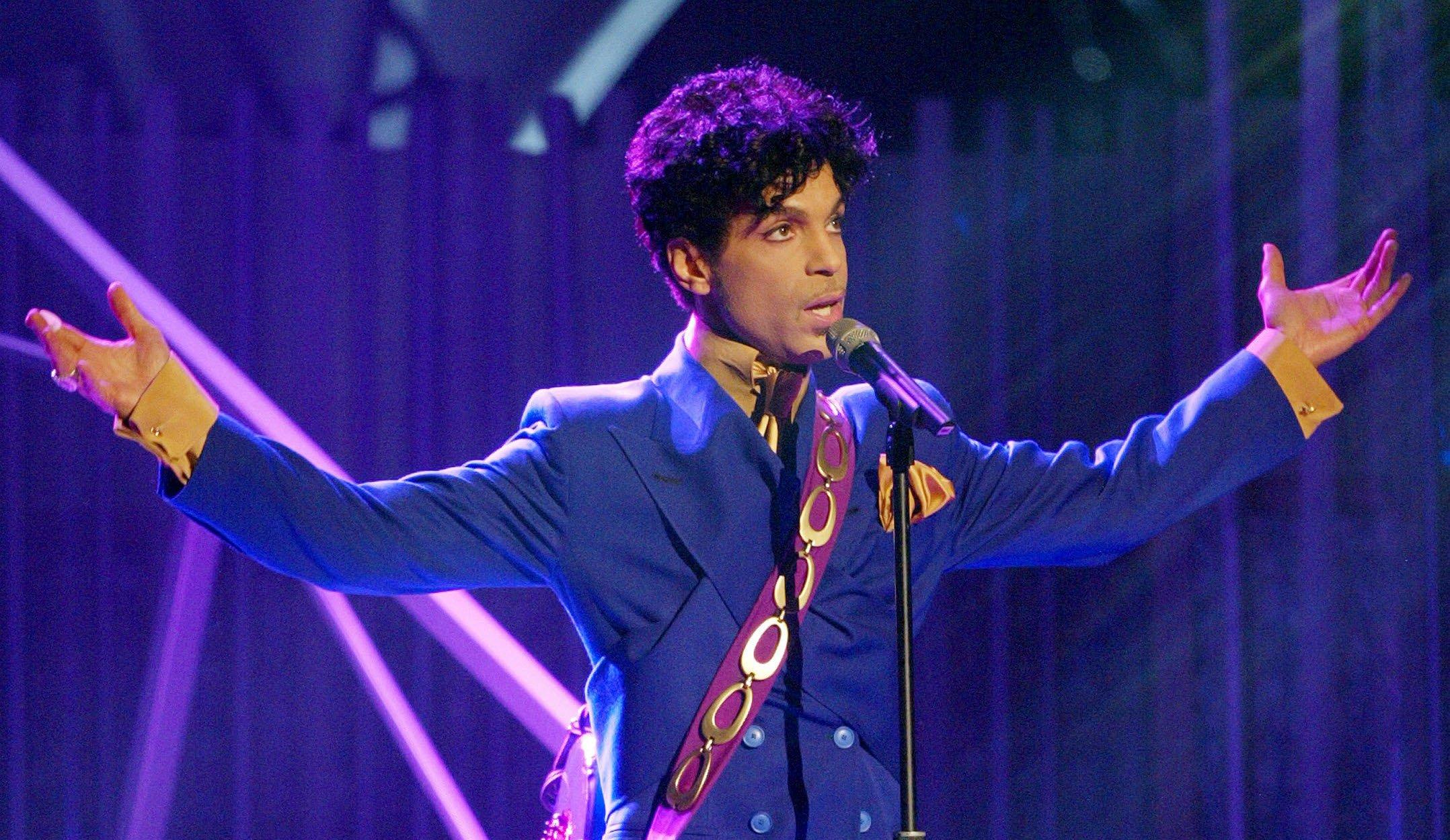
Photo: Frank Micelotta/Getty Images
list
8 Ways 'Musicology' Returned Prince To His Glory Days
Twenty years after the release of Prince's commercial comeback, 'Musicology,' dig into how the album reminded the world of the Purple One's musical genius and legendary status.
After nearly a decade in the commercial wilderness, Prince seemed determined to bring his music back to the masses with his 28th studio effort. While announcing its release, the Paisley Park legend had one thing to declare: "School's in session."
Eschewing the jazz fusion sound of his previous releases in favor of a more mainstream blend of pop, R&B, funk, and soul, Musicology proved to be a valuable lesson. It returned the megastar to the upper reaches of the Billboard 200, earned five GRAMMY nominations (and two wins), and reasserted Prince's place on the touring ladder. Even the previously dismissive critics came back on board, with Rolling Stone declaring it "as appealing, focused, and straight-up satisfying an album as Prince has made since who can remember when."
And while Prince was always a prolific artist, it seems Musicology was highly inspirational for the Purple One himself, too. Just two days after the album's release, Prince dropped both his 29th studio effort, The Chocolate Invasion, and his 30th, The Slaughterhouse, exclusively online.
Of course, it's the major label release that has become the more notable part of his remarkable oeuvre. Musicology paved the way for a string of further late-career classics and revived the legacy that's still going strong nearly ten years after his untimely death.
In honor of Musicology's 20th anniversary, here's a look at how Prince's masterclass reaffirmed his status as an artistic genius.
It Saw Prince Return To His Best Form…
After three albums of jazz fusion (The Rainbow Children, Xpectation, N-E-W-S) and the piano-heavy One Nite Alone..., it appeared as though Prince was no longer interested in the melting pot of sounds that defined his imperial phase. But Musicology showed his polymathic tendencies were still intact.
Channeling the acts he explicitly namechecks (James Brown, Earth Wind and Fire, Sly and the Family Stone), the opening title track was the slickest, funkiest thing he'd put his mononym to in years. Accompanied by one of his most provocative videos, "Cinnamon Girl" harks back to the classic roots rock of the Rolling Stones, while the epic ballad "A Million Days," Marvin Gaye-esque soul of "Call My Name," and jam session "If Eye Was the Man in Ur Life" all further helped the record to live up to its "no boundaries" pre-release claims.
…And Also Saw Him Return To Lyrical Form
It wasn't just on a musical level that Prince flourished. Whereas its predecessor was largely focused on his conversion to the Jehovah's Witnesses, Musicology's lyrics embraced more universal themes — from the domestic bliss of "Reflection" ("Did we remember to water the plants today") to infidelity drama "What Do U Want Me 2B."
Prince's sublime storytelling abilities are perhaps best showcased on "Illusion, Coma, Pimp & Circumstance," a money versus love debate involving a gigolo and a much older socialite. He also proved he could still tackle serious issues with "Cinnamon Girl," the story of a mixed-race youngster impacted by post-9/11 paranoia. Gossip hounds, however, will be most intrigued by "Life O The Party," which appears to take a blatant pot shot at one of his fellow '80s superstars ("My voice is getting higher/ And I ain't never had my nose done/ That's the other guy").
It Brought Him Back To The Charts
Prince had been one of the dominant Billboard 200 artists of the 1980s with Purple Rain, Around the World in a Day, and the Batman OST all reaching No. 1. But thanks to the record company dispute that inspired his name change to an unpronounceable squiggle, uncommercial release strategies (several albums were only available via his NPG fan club) and the general law of diminishing returns, his chart appeal started to wane from the mid-1990s onward. In fact, 2001's The Rainbow Children peaked no higher than 109!
However, issued through Columbia (his first major label release since Rave Un2 the Joy Fantastic on Arista five years earlier), Musicology completely reversed his fortunes. Reaching No. 3, it became the star's first top 10 album since 1995's The Gold Experience and his highest charting since 1991's Diamonds and Pearls.
It Pioneered A New Sales Strategy
In 2017, more than a third of the year's Billboard 200 chart-toppers benefited from ticket bundles, a release strategy in which a chart-eligible free copy of a new album is given away — when manually redeemed — with each concert sale. This included The Killers' Wonderful, Wonderful, Shania Twain's Now, and Kenny Chesney's Live in No Shoes Nation, the latter becoming the first live album to reach the spot in seven years.
While this was the technique's commercial pinnacle, the idea was actually first instigated by Prince. Indeed, proving that he could still be ahead of the curve in his fourth decade as an artist, Musicology was automatically made available to anyone attending Musicology Live 2004ever for no extra charge. This accounted for 125,000 copies (roughly 25 percent) of the 632,000 sold in its first five weeks. In fact, the experiment proved to be so successful that Billboard decided to change its rules to avoid the potential for chart manipulation.
It Gave Him Further GRAMMY Glory
Keen to remind everyone of his inimitable talents in time for Musicology's release, Prince graced the GRAMMYs stage just two months beforehand and, with a little help from Beyoncé, brought the house down. The two generational icons kicked off the ceremony with a spellbinding medley which included the former's "Purple Rain," "Let's Go Crazy" and "Baby I'm a Star" and the latter's "Crazy in Love."
The following year, Prince was back as a five-time nominee. Not only were they his first R&B nominations in nearly a decade, but his two wins — for Best Male R&B Vocal Performance for "Call My Name" and Best Traditional R&B Performance for "Musicology" — marked the Purple One's first GRAMMY wins since 1987.
It Set The Stage For A Trio Of Now-Classic Releases
Prince certainly didn't waste the goodwill earned from his surprising commercial renaissance. In 2006, the Purple One achieved another major milestone when 3121 became his first album ever to debut atop the Billboard 200, knocking off the soundtrack from Disney phenomenon High School Musical in the process. Named after the address of the house he was renting during its recording, Prince's fourth U.S. chart-topper also spawned his first Hot 100 entry in seven years with the funky "Black Sweat."
Prince followed it up with 2007's No.3-peaking Planet Earth, a record controversially released for free as a Sunday newspapercovermount in the UK, but in the more traditional way this side of the Atlantic. And this particular golden period was wrapped up in 2009 with Lotusflow3r, a Target exclusive triple album also designed to showcase the talents of his latest protege Bria Valente, which reached No. 2. Without Musicology paving the way, this trio might not have attained late-classic status.
It Restored His Reputation As A Must-See Live Act
While Prince had always remained a popular live draw no matter his commercial success, his touring presence since the start of the century had been a little unpredictable. His supposed 'world tour' of 2003 was largely confined to Australia; his One Nite Alone... run the year previously was more jazz club than regular gig, and 2001's A Celebration was reportedly cut short over a record company dispute.
Musicology fully restored him to must-see status. Its accompanying trek, which plotted 77 dates across 55 U.S. cities, sold over 1.4 million tickets, grossing a whopping $87.4 million along the way to become the most lucrative of 2004 — and the highest-grossing tour of Prince's career. Its success allowed Prince to launch a record-breaking 21-date residency at London's O2 Arena and the lengthier, guest-heavy Welcome 2 tour, during which he was joined on stage by everyone from Whitney Houston to Whoopi Goldberg.
It Fearlessly Embraced His Past
Contrary to his previous array of jazz fusion albums, Musicology suggested Prince was now content to reconnect with his chart-topping megastar past. Its title track even concludes with some radio station surfing featuring snippets of "Kiss," "Little Red Corvette," and "If I Was Your Girlfriend."
It was a similar story with its accompanying tour. Giving exactly what his fans wanted, the set lists were largely comprised of his greatest hits, with his new album only getting a nod on a handful of occasions.
The Musicology era was Prince's way of showing that he hadn't forgotten why everyone fell in love with him in the first place, while simultaneously extending his creative legacy. Whether looking back at all of its accolades or checking out all of the celebrations on Prince's official Instagram page, it's clear that Musicology remains a vital part of the Purple One's catalog 20 years on.
